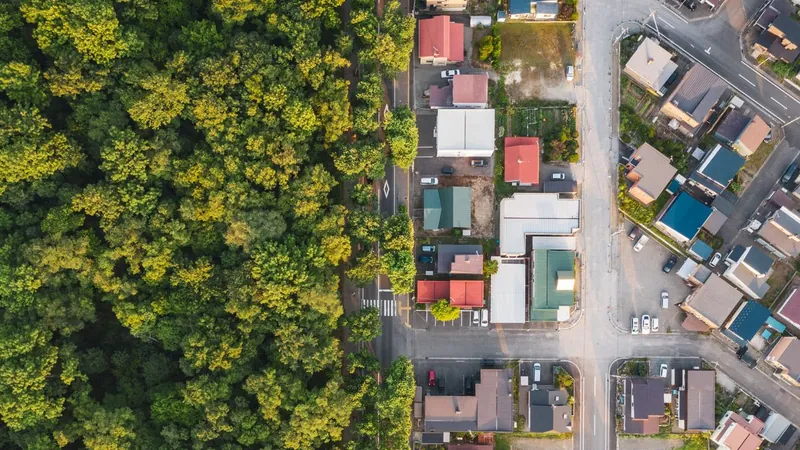
The Silent Healer: How Satellites Unveil the Therapeutic Power of Nature
2024-11-10
Author: Yan
The Role of Nature in Health
In an age where urban sprawl dominates our landscapes, are we overlooking one of our most potent allies in the battle against illness? Nature is not just a backdrop for our lives; it plays a crucial role in our health and well-being. Kathy Willis, a professor of biodiversity at the University of Oxford, sheds light on this profound relationship in her illuminating book, Good Nature. She unveils how satellite technology is revealing the alarming effects of diminishing green spaces on our mental and physical health, linking urbanization to rising cases of respiratory and cardiovascular diseases.
The Impact of Urbanization on Green Spaces
As cities expand, nature often retreats, and this erosion of green spaces poses significant threats to public health. Groundbreaking studies using satellite imagery are starting to paint a clearer picture of how our environment influences our mental well-being. For instance, research has established a striking correlation between vegetation's health, as measured by the Normalized Difference Vegetation Index (NDVI), and mental health outcomes. Higher NDVI scores, which reflect greener environments, are consistently associated with lower rates of depression, particularly among women and younger demographics.
Consequences of Diminished Greenery
But the implications go beyond mental health. An unsettling study demonstrated that the mass removal of city street trees led to an alarming spike in human mortality—over 21,000 deaths attributed to respiratory issues and heart-related ailments. As the emerald ash borer infestation swept across the U.S., uprooting hundreds of millions of ash trees, the resulting loss of urban greenery had devastating consequences for respiratory health. This research highlights an inconvenient truth: when we clear our environment of natural elements, we inadvertently harm ourselves.
Innovative Health Solutions through Data
The intersection of population biobanks—vast repositories of biological samples and health records—and environmental satellite data is providing unprecedented insights. By analyzing these two expansive datasets, researchers are uncovering how individual health profiles relate to environmental conditions, paving the way for innovative health solutions that address both psychological and physical ailments.
The Urgency of the Findings
In the U.K., where approximately 7.6 million individuals suffer from cardiovascular diseases and around 15% of the population relies on antidepressants, these findings feel particularly urgent. Nature could be our best-kept secret in this health crisis, offering simple and low-cost interventions to improve well-being.
A Vision for a Greener Future
Imagine a future where city planners integrate more green spaces, community gardens, and urban forests in their designs—it's not just about aesthetics, but fundamental to public health. As we stand on the brink of a health revolution, we must heed the call of nature. This isn’t merely a prescription for a healthier lifestyle; it is a profound reminder that our connection to the natural world holds the keys to alleviating modern health challenges.
Conclusion: Nature's Vital Role
Let’s not underestimate the power of nature as we navigate through an increasingly urbanized world—our health may very well depend on it!






 Brasil (PT)
Brasil (PT)
 Canada (EN)
Canada (EN)
 Chile (ES)
Chile (ES)
 España (ES)
España (ES)
 France (FR)
France (FR)
 Hong Kong (EN)
Hong Kong (EN)
 Italia (IT)
Italia (IT)
 日本 (JA)
日本 (JA)
 Magyarország (HU)
Magyarország (HU)
 Norge (NO)
Norge (NO)
 Polska (PL)
Polska (PL)
 Schweiz (DE)
Schweiz (DE)
 Singapore (EN)
Singapore (EN)
 Sverige (SV)
Sverige (SV)
 Suomi (FI)
Suomi (FI)
 Türkiye (TR)
Türkiye (TR)